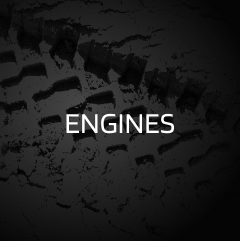 CCA Spares
CCA Spares
Timing Belts vs. Timing Chains – Engine Synchronization Explained
In our exploration of internal combustion engines, the spotlight now turns to a critical component responsible for synchronizing the engine’s internal events: the timing system. Specifically, we’ll delve into the two primary methods employed for this purpose – timing belts and timing chains – understanding their functions, advantages, and considerations.
Timing System Overview:
The timing system in an engine ensures precise coordination between the rotation of the crankshaft and the movement of the camshaft(s). This synchronization is crucial for maintaining proper valve timing and overall engine performance.
Timing Belts:
Timing belts are toothed, reinforced rubber belts that connect the crankshaft to the camshaft(s). Delve into the design considerations of timing belts, including the tooth profile and materials used for reinforcement. Explore the advantages of timing belts, such as reduced noise and smoother operation.
Advantages of Timing Belts:
- Quiet Operation: Timing belts operate with less noise compared to timing chains, contributing to a quieter engine.
- Less Vibration: The inherent flexibility of timing belts results in reduced vibration, enhancing overall driving comfort.
- Lightweight: Timing belts are generally lighter than timing chains, contributing to improved fuel efficiency.
Considerations and Maintenance for Timing Belts:
While timing belts offer advantages, they require periodic replacement due to wear and the risk of snapping. Learn about the recommended replacement intervals and the importance of timely maintenance to prevent potential engine damage.
Timing Chains:
Timing chains are metal chains that connect the crankshaft to the camshaft(s). Understand the robust construction of timing chains, often made of high-strength steel, and their ability to withstand high loads and prolonged use.
Advantages of Timing Chains:
- Durability: Timing chains are known for their durability and longevity, requiring less frequent replacement compared to timing belts.
- Consistent Performance: The direct mechanical link between the crankshaft and camshaft(s) ensures consistent and precise timing over the engine’s lifespan.
Considerations for Timing Chains:
While timing chains are durable, they are not immune to wear. Explore considerations such as tensioner and guide maintenance, as well as the potential for timing chain stretch over time.
Recent Technological Advancements:
Advancements in automotive technology have led to innovations in both timing belts and timing chains. Discover recent developments such as maintenance-free timing chains and high-performance timing belt materials, contributing to extended service intervals and improved reliability.
Choosing Between Timing Belt and Timing Chain:
Considerations for selecting between a timing belt and timing chain include factors such as engine design, maintenance preferences, and cost considerations. Explore scenarios where one system may be more advantageous than the other based on these factors.
In conclusion, the choice between timing belts and timing chains involves a careful balance of advantages, considerations, and specific engine requirements. This article has provided a comprehensive overview of these components, shedding light on their functions and the factors influencing their selection. Stay tuned for the next installment as we continue our journey through the intricate components of internal combustion engines.

